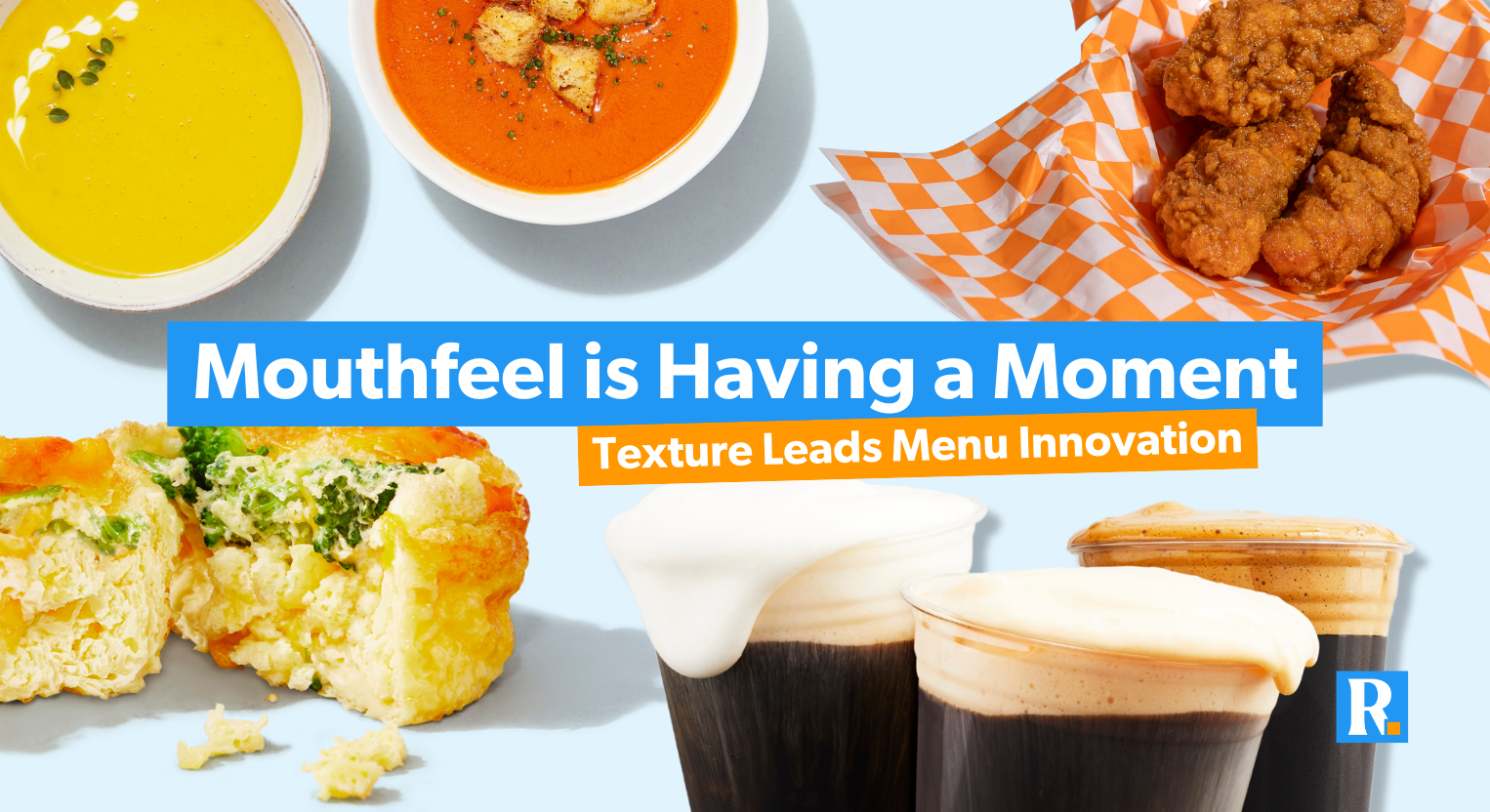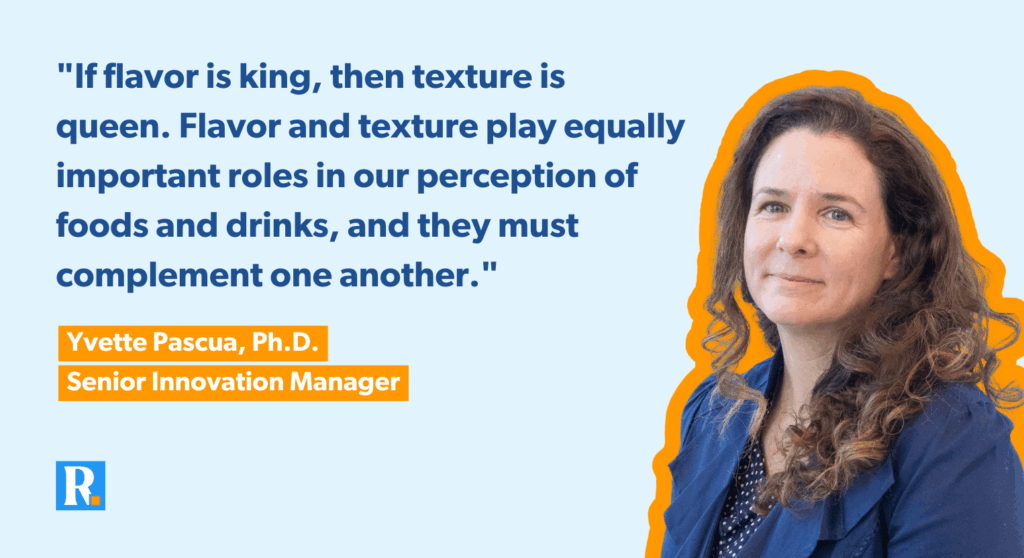
June 9, 2025 – Step to the side, flavor, because texture has entered the chat. Texture, whether it’s crispy or creamy, is becoming a bigger topic of conversation as it relates to menu innovation. Developing a menu item with a desirable mouthfeel and complementing high-impact flavor is possible (and necessary!) to create that unique experience that consumers are craving. So how do you pull it off? We asked Shannon O’Shields, VP of Marketing, and Yvette Pascua, Ph.D., Senior Innovation Manager, for their expertise on how to make the multi-sensory magic happen. 🪄
Yvette Pascua, Senior Innovation Manager: “If flavor is king, then texture is queen. Flavor and texture play equally important roles in our perception of foods and drinks, and they must complement one another. Because eating is a multi-sensory experience, when we see something, we have an expectation of how it should taste and feel. If either the flavor or texture doesn’t meet our perceived expectation, we have a negative experience.
Historically, brands have been hyper-focused on the flavor side of product development, but consumers are prioritizing mouthfeel more than ever before. According to Google Trends data, searches for “mouthfeel meaning” have increased 60% since February 2025, indicating texture is an element of consumption that consumers are paying more attention to, and therefore, food and beverage brands should be, too.”

Shannon O’Shields, VP of Marketing: “Consumers are having as many negative experiences with off-premises dining as positive ones. Sure, operators can experiment with alternate packaging or even new breading systems to maintain the quality of their product, but we’ve seen the most success when operators focus on flavor systems, like CrispKeeper, that deliver the same (if not better) results.
CrispKeeper is a bit of flavor science at work. This patent-pending technology was designed to give fried foods the bold, saucy flavor everyone wants, without losing the crunch. Traditional sauces and glazes have high water content that turn crispy coatings soggy, and dry seasonings don’t always stick where you want them. CrispKeeper hits the sweet spot: it clings and coats, delivering high-impact flavor while keeping every bite crispy and craveable longer.
There’s fun in listening to crackling or crunching while watching someone eat or cook on social media. While flavor is familiar territory, texture is novel and ready for exploration. The right texture can really make a product stand out.”
Shannon O’Shields, VP of Marketing: “Sometimes the easiest way to serve up creamy, craveable textures is to start right where you are — with the menu you already have. Creaminess can elevate seemingly simple dishes by adding a twist to familiar recipes and reinventing them into unique, indulgent, comforting dishes with minimal lift for the operator. The beverage category is a great place to start with this type of innovation.
Creamy beverages are all the rage right now. From dirty sodas to creamy refreshers and lemonades, adding a dash of smooth, velvety cream to carbonated or highly acidic beverages offers a deliciously balanced and visually pleasing treat for consumers. Cold foam is another high-impact way to deliver texture to beverages. Projected to grow 256% on U.S. restaurant menus through 2028, cold foam can be added to hot or cold drinks to deliver a not-too-sweet but decadent flavor with an airy, silky texture – otherwise known as anti-texture.”

Shannon O’Shields, VP of Marketing: “The growing demand for “anti-texture” is a response to consumer appeal for comfort foods, high-quality menu creations and simple indulgence. We identified the early beginnings of this trend last summer through our work with The NEXT Flavor Network, our collective of content creators and food influencers who help us discover the wants, needs and cravings of their largely Gen Z audiences. Their audiences responded positively to the idea of creamy additions to popular beverages, like creamy lemonades and soft drinks and even traditionally spicy sauces, helping to add a more complex and balanced heat.”
Yvette Pascua, Senior Innovation Manager: “Product developers can incorporate functional ingredients like dairy or plant proteins, hydrocolloids and starches that mimic the robust mouthfeel contributed by fat but with less guilt – and ultimately cost. For example, our liquid protein base is an all dairy, clean-label base that’s neutral in flavor and enhances texture while increasing protein content.
Replacing ingredients is hardly ever a one-to-one swap, though. When rewriting formulas, developers must be knowledgeable about how certain ingredients interact with each other and how to control them. Sometimes the solution is a new processing technique – an area of expertise Rubix Foods specializes in and has helped many of our customers with – both in foodservice and manufacturing.”
Ready to join the mouthfeel movement? Collaborate with our team of culinary creators, food science experts, and sensory specialists to solve your texture problems without sacrificing flavor.
Portions of this article were originally published in interviews with FoodBev Media, Modern Restaurant Management and Restaurant Business.